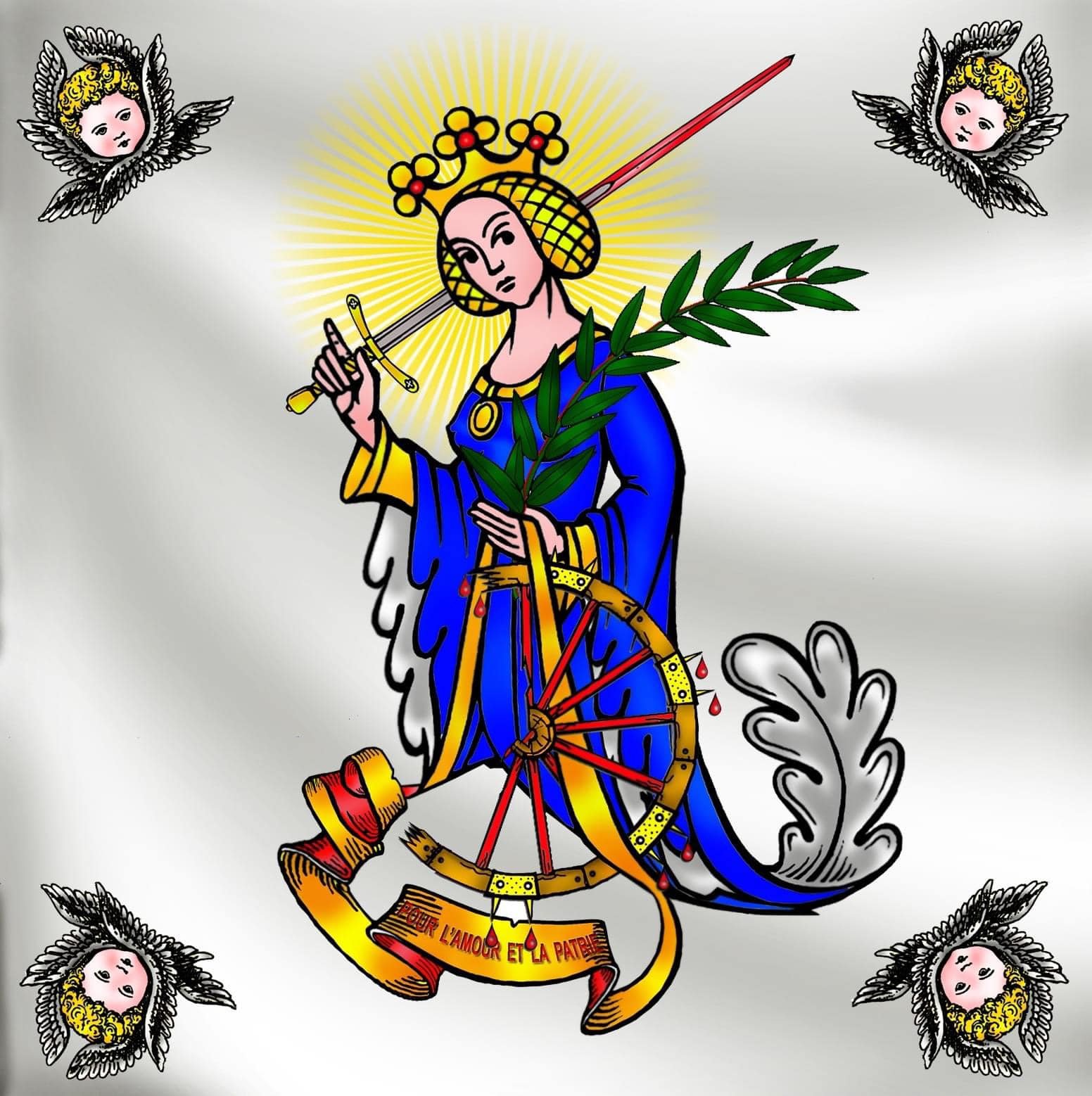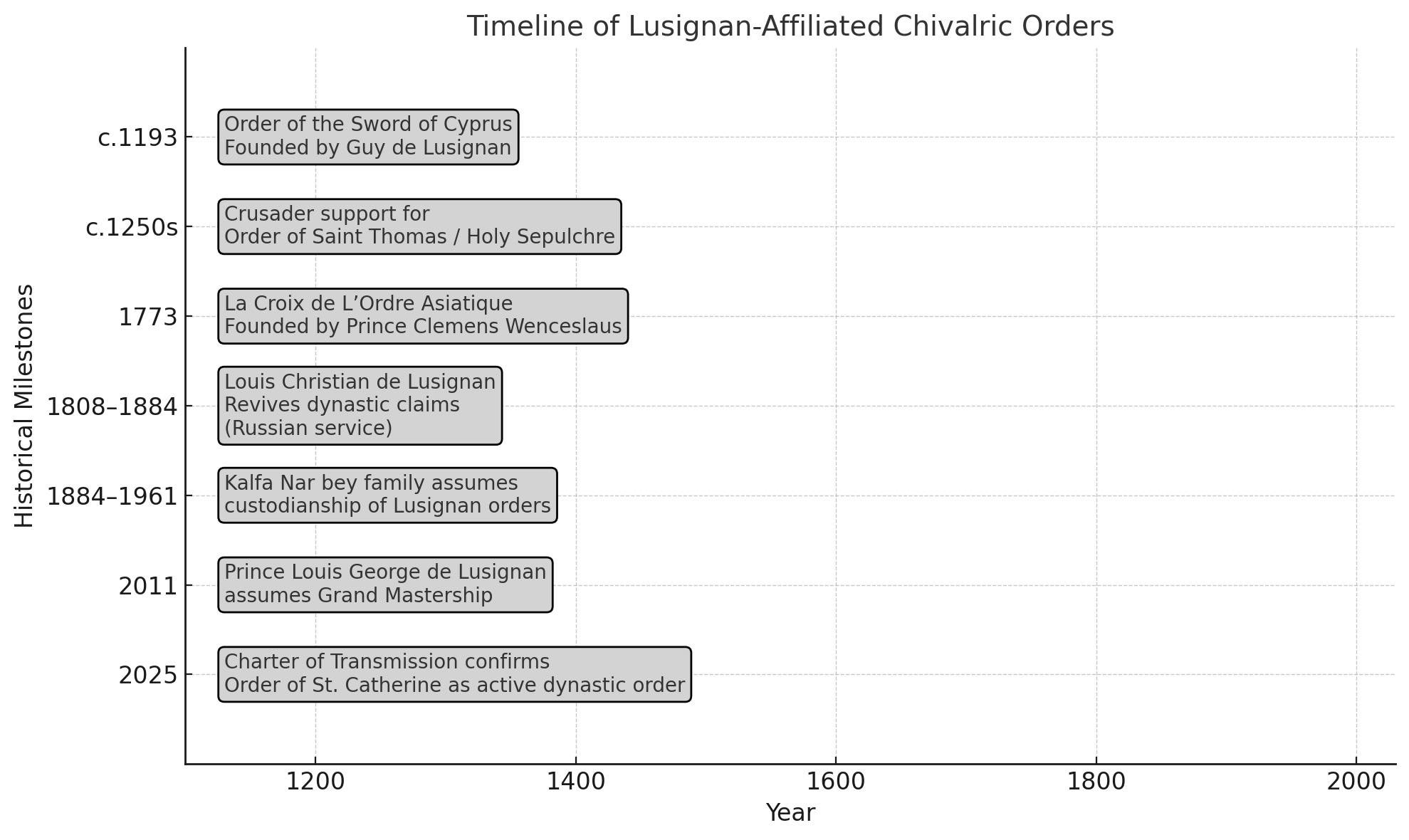
The Order of Saint Catherine with Mount Sinai: A Historical and Academic Account
The Order of Saint Catherine with Mount Sinai is a unique religious and chivalric phenomenon that spans from Byzantine monastic origins to late medieval crusader politics and continues as a modern revival under the House of Lusignan. Rooted in the veneration of Saint Catherine of Alexandria and the monastic traditions of Mount Sinai, the Order has historically functioned at the crossroads of faith, politics, and pilgrimage. Its evolution reflects deep Byzantine and Latin Christian influences, political patronage—especially from the Lusignan dynasty of Cyprus—and contemporary efforts to reframe this tradition as a chivalric order.

Heritage over a symbolic chivalric network
The modern Royal House of Lusignan, particularly under the Kalfa Nar bey dynasty (Prince Louis George de Lusignan), claims heritage over a symbolic chivalric network that draws on medieval, Crusader, and dynastic traditions. Here is a summary of the key orders associated with this lineage:

Are You Called to Serve with Honour?
The Chivalric Orders of Saint Catherine of Mount Sinai, The Order of Saint Blaise, La Croix de L’Ordre Asiatique and The Order of the Sword - of The House of Lusignan.

The House of Lusignan
The House of Lusignan is a royal house of French origin, which at various times ruled several principalities in Europe and the Levant, including the kingdoms of Jerusalem, Cyprus, and Armenia, from the 12th through the 15th centuries during the Middle Ages. It also had great influence in England and France.
The family originated in Lusignan, in Poitou, western France, in the early 10th century.

Two pillars of knighthood
Throughout history, two pillars of knighthood have shaped the chivalric tradition: Ecclesiastical Orders and Royal Orders of Chivalry. While both uphold honour, service, and ceremonial grandeur, their origins, authority, and missions differ in profound and meaningful ways.
